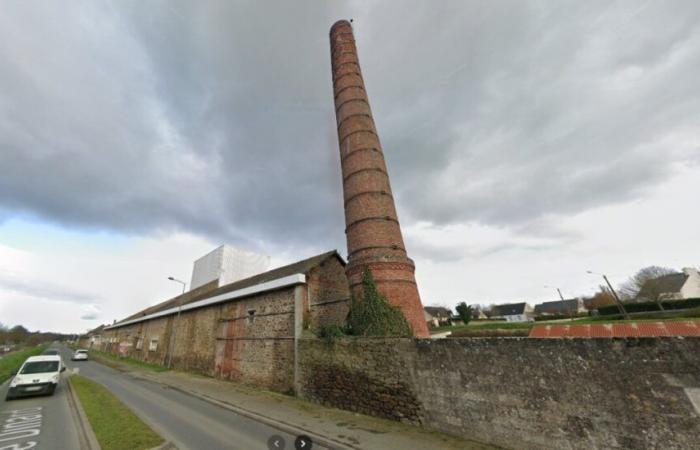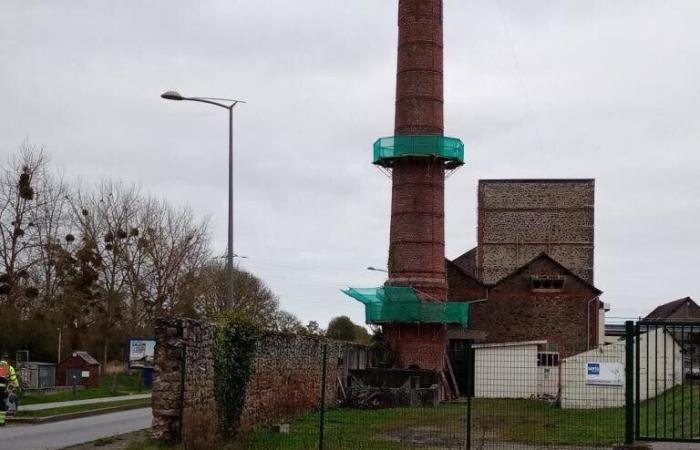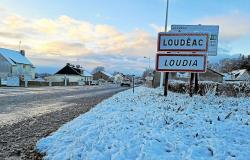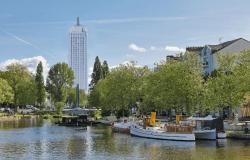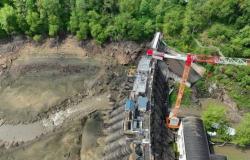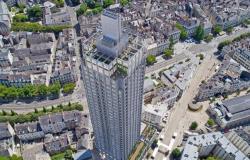Par
Editorial Dinan
Published on
Nov 10 2024 at 10:49 am
See my news
Follow Le Petit Bleu
The brick factory chimney of the dairy cooperative, located in Plancoët (Côtes-d'Armor), along the Arguenon, on the road to Dinard (Ille-et-Vilaine), always stands tall, proud and majestic. In a precarious state, its demolition was once mentioned. It is now being renovated. “This is excellent news,” emphasizes Jean-Paul Etrillardhonorary president of the association of Heritage club de Plancoët, local historian.
Conservation work
For three years now, the fireplace has been making headlines. At the time, a decision considered too hasty was denounced by the Etrillard couple, great defenders of this industrial heritagedating from 1912.
Upon learning of the decision to work to conserve the factory chimney by the current owners, Jean-Paul Etrillard was keen to underline the correctness of the decision taken by the mayor Patrick Barrauxregarding the conservation of this tower:
» Enhance it by preserving its history, that's what the mayor has succeeded in doing. He knocked on every door and supported the merits of preserving this heritage, refusing to sign the demolition permit that was presented to him at the time. »
Last week, at its summit, we could see workers at work. For the history buff, there was urgency, wear and tear was beginning to take its toll. »
Listed in the heritage of the municipality
Three platforms allowing work for consolidation were installed. Pulleys, scalds, ropes have been installed since mid-October. The end of the work has not been dated.
However, it is planned that this building will join the municipal heritage in the more or less short term.
Always one step ahead, the local historian-writer suggests making one meeting place with the idea of a possible opening in order to make “a brand fire” there during the summer periods.
» We could have a barbecue there, with a place to relax. Everything is possible with the proximity of the parking lot.”
What is certain is that he does not hide his joy at the sight of the work that is underway. “It is part of the heritage, making it disappear would have been a disaster,” he assures.
Still considered by many people to be the emblem from the town of Plancoët, the brick chimney still has a bright future ahead of it.
The oldest distillery in Brittany
The recent distillation of premier whisky breton of Maison Jouffe established just a few hundred meters away, in the town of Saint-Lormel (Vergers zone) also awakened another page of the history of this industrial site.
It had housed, before becoming a dairy, the Plancoët distillery, authorized by prefectural decree of June 24, 1912and built during the same year. According to historians, it was even, in this form, the first distillery from Brittany.
“The statutes of the company were formed on September 26, 1912 between Emile Jamont, Alfred Petit and Emmanuel Normand who founded SA Distilleries de Bretagne whose share capital amounted to 350,000 francs. Directed by Emile Foulard, the factory produces beet alcohol,” it is mentioned in a document found Laurent Jouffe with Jean-Paul Etrillard.
“By prefectural decree of February 12, 1913, the director of the establishment was authorized to establish a water intake in the Arguenon river, at a place called Roche Emerie, with the aim of transporting the beets from the silos to the distillery; part of the water from the Evinais stream is also captured for their treatment,” describes the same document.
The distillery processed daily 150 tons of beets which provided 100 to 120 liters of pure alcohol.
Bad harvest and war 14-18
THE heavy rains of 1912, harmful to beet cultivation, associated with insufficient capital and at conflict of 1914will sound the death knell for the production of beet alcohol.
During the First World War, the Plancoët distillery was officially responsible for providing for the needs of National Defense as an annex to the Pont de Buis National Powder Factory headed by Mr. Thibaudau.
On October 20, 1920, the director of the Plancoët distillery, specialized in the manufacture of alcohol from cider apples, was authorized to establish under the ground of the RN 168 a direct pipeline for evacuation, into the river Arguenon, waste water from the factory.
In 1949an industrial dairy is set up in the disused premises of the distillery and begins its activity on August 30, 1950.
Follow all the news from your favorite cities and media by subscribing to Mon Actu.

